What is a Bushcraft-Fire-Kit and why should you own it?
A fire kit is a collection of various kindling and tools with which you can create a fire while bushcrafting. Read now what belongs inside.
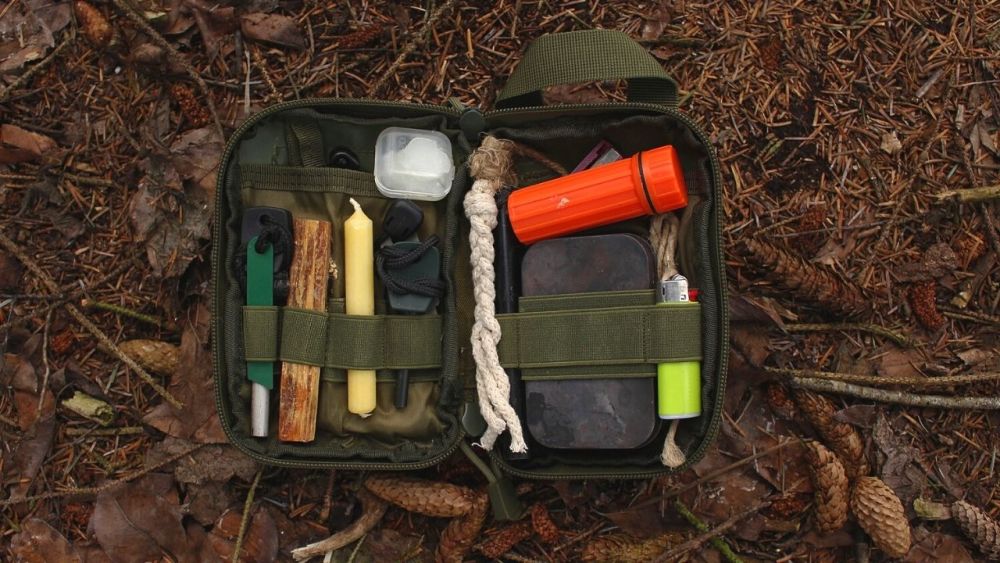

From Martin Gebhardt. Check out my “About me” page.
👉 The key facts from this guide
- A fire kit is a collection of tinder and tools that you need to ignite a fire when Bushcrafting. It helps you to be independent and versatile, and enables you to light a fire in any weather conditions.
- The recommended items for a fire kit include various fire steels, a lighter, matches, a candle, Fatwood and pine resin, Vaseline, natural ropes, a magnifying glass, a pencil sharpener, birchbark, and a traditional striker and flint.
- The bag for your fire kit should be well organized so that you have a good overview of your equipment.
- It is important to learn various methods for making fire to make your bushcraft trip more diverse and independent.
A Fire-Kit is a collection of various kindling and tools that you can use to start a fire while Bushcrafting.
In this guide, I'll share with you what I carry in my Bushcraft-Fire-Kit and what I recommend for you.
Why you should own a Fire-Kit
It's enough to have a lighter and a tampon in your pocket.
But it's obviously better to learn more fire-starting methods. This will make your Bushcrafting trip more diverse, and you'll be more independent.
Furthermore, some ignition techniques are not suitable for every weather condition.
And if you have several ways to make a fire, you can always light a fire - even in an emergency.

What should be in your Bushcraft-Kit?
Actually, everything you can use to make a fire.
The things listed below are just my personal recommendations.
You can supplement it with your equipment, or you can omit some things. However, my kit includes proven methods that have been used by Bushcrafters for decades.

Bag
The bag is an inexpensive version of the Maxpadition Pocket Organizer that I bought years ago on eBay, but you can find these bags almost anywhere by typing "EDV Organizer" or "EDC Bag" on a search platform.
Anyway, I like it when I can organize my things well in the bag to have a good overview.
Different Fire Steels
I always have many fire steels with me. A magnesium fire starter, which can be scraped off, and thus I can quickly ignite a fire even in wet conditions.
A huge fire steel, so I can handle everything well even with cold fingers.
And a small fire steel from Light my Fire, which has now become my favorite fire steel (you can read my detailed review with video here).
If you're looking for more good fire steels, refer to my Toplist.
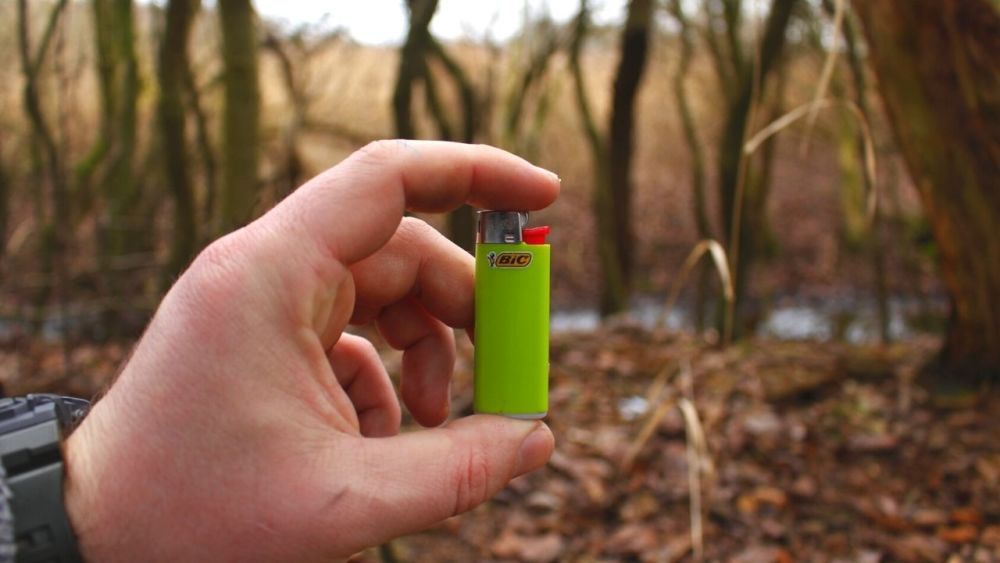
Lighter
If you end up in an emergency, you're tired, and you don't have any more strength, you need to quickly create a fire.
The lighter is best suited for this purpose.
I have a small lighter from the company BIC. A storm lighter is also a good choice.
P. S. By the way, I always carry extra lighters in my pockets and one in my pants pocket. In winter, it's even close to my body, so it always stays functional.
Matches
In this case, I have chosen storm matches. They are more durable than conventional matches and also burn well when it's windy and humid.
The simple matches from the supermarket also work, they just need to be stored so that they don't get moist.
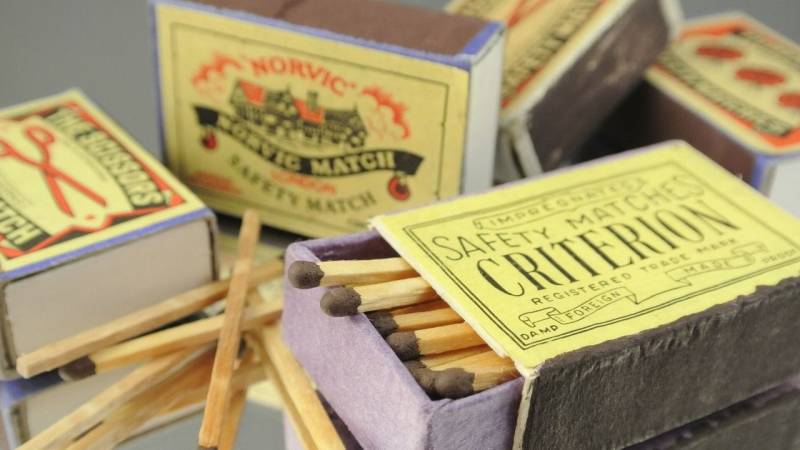
A Candle
A candle is not only useful for providing light in the dark, but also for extending the life of a single match. This provides you with more time to ignite your kindling.
Alternatively, you can use a tea light and place it under a pile of small twigs. Even if the candle is wet, the wick dries quickly, and you can still light a fire under unfavorable conditions.
Pro-tip: You can use candle wax to waterproof your clothing. Be sure to use a candle made of real beeswax for best results.
Fatwood and Pine Resin
Pine resin, also known as Fatwood, is well-known in the bushcraft community. It is essentially a flat split piece of resin-rich wood.
You can harvest pine resin from coniferous trees (preferably pine) or buy it from an online retailer.
I opted for the latter because finding pine resin can be hit or miss, and now I have a supply for a longer period of time.
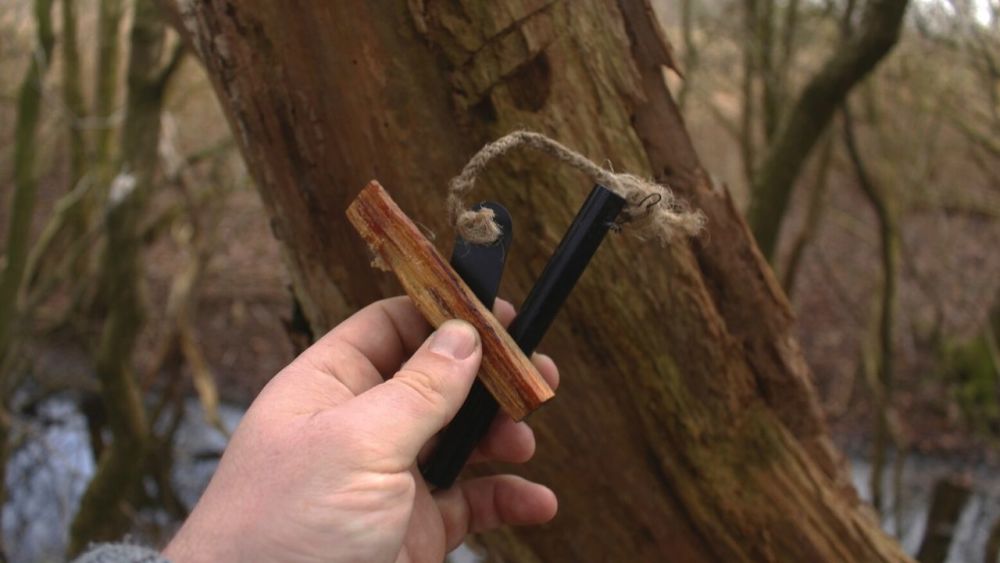
Vaseline
Vaseline is a petroleum product, which makes it highly flammable. When applied to your Firesteel, it provides perfect corrosion protection.
In addition, Vaseline can be easily combined with other flammable materials such as fine hay, cotton wool, or cattail seeds.
This helps your kindling burn more slowly and for a longer period of time. Pine resin from coniferous trees can also be used for the same effect.
Natural Fiber Ropes
When jute twine is finely shredded, you have a perfect tinder nest in no time. This is especially important when it is very humid outside.
A Magnifying Glass
In the summer, all you need is a magnifying glass and the sun to create embers.
A magnifying glass is really just for fun, but children are always amazed by its function (and adults, of course). So, bring a magnifying glass with you in the summer.
It can also be helpful for reading maps and navigating.
Read also: Fire with the Sun: 8 expert tips you need to know
A Pencil Sharpener
When time is of the essence, a conventional pencil sharpener can produce wonderful fine shavings.
Whether from dry wood or pine resin – a few turns and voilà, you have feather stick-like kindling. Bring out your Firesteel and we have fire.
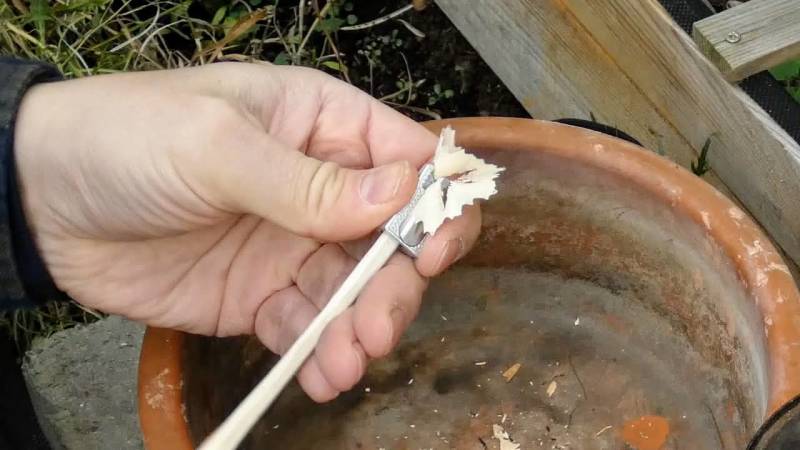
Birch Bark
Occasionally, there is nothing better than nature's "wax paper" – birchbark.
Freshly collected pieces are naturally better because they contain more of the essential oils. However, with a piece of dry birchbark and a lighter, you can get a good and warming fire 99.99% of the time.
Actually, you can find birchbark almost everywhere, but I always carry a small reserve in my pocket because there are really areas without birch trees.
Also read: Birch bark: the survival miracle [application examples]
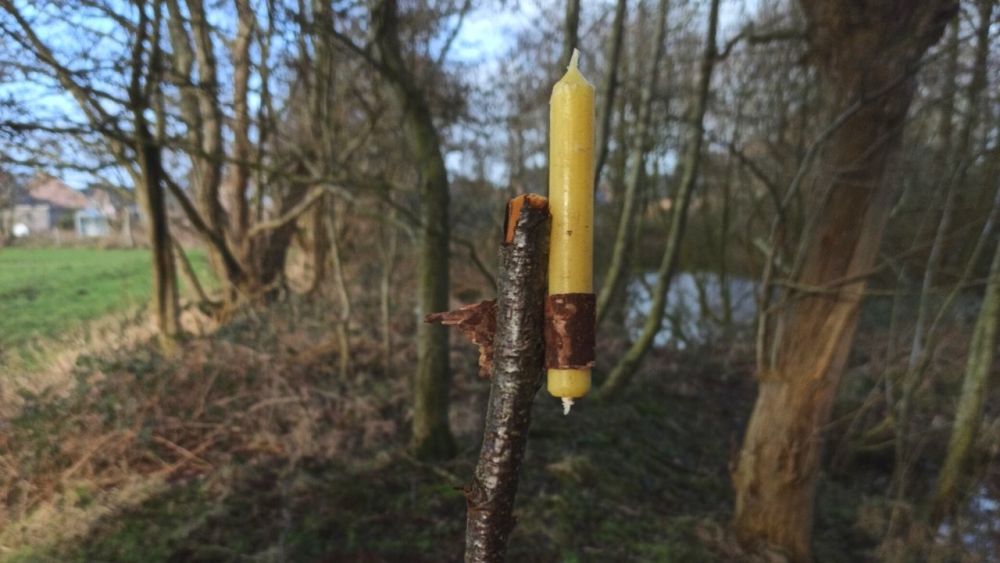
Traditional Flint & Steel
My absolute favorite because this method is so simple and yet so effective.
Our ancestors used the flint and steel for a long time before matches were developed.
You need a flint or sillex (a sharp-edged piece of stone) and a piece of Charcloth (which is also called charred cotton in English), as well as a striking iron (an iron with a high carbon content).
An alternative is the amadou mushroom (Fomes fomentarius), but it is much more difficult to create an ember with it.
I keep all of these materials in a metal tin, so I can make Charcloth myself at any time.
You can learn how to make charred cotton yourself in my article "How to make charred cotton [step-by-step instructions]".
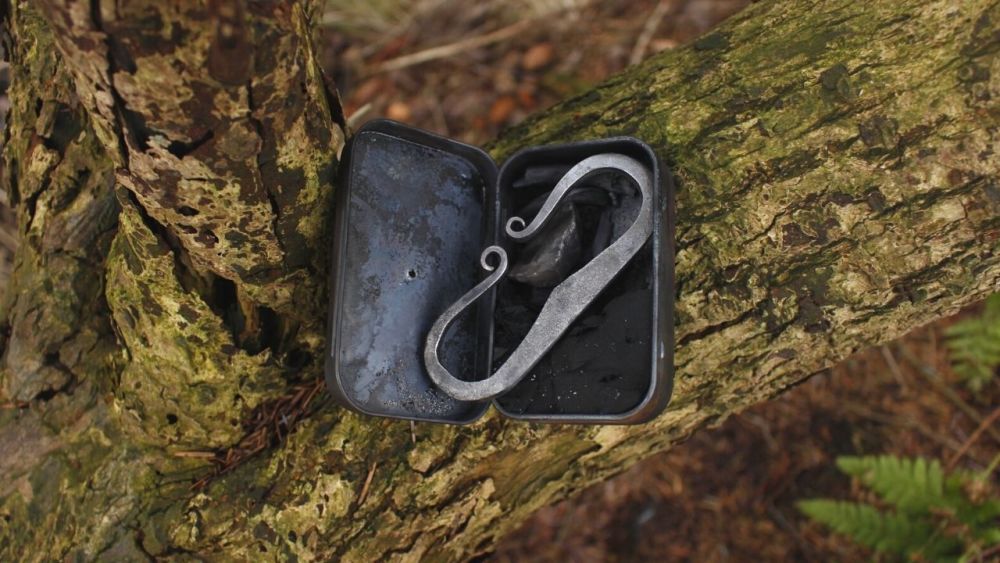
In addition, I use a small waterproof bag where I store the tinder, already well-prepared and dry. This includes fine jute fiber and cotton balls.
Pro Tip: Pack a Tampon
A tampon is excellently compressed and is packaged in a waterproof wrapper. And combined with Vaseline and a lighter, it is unbeatable.
But not only that, because even WITHOUT a lighter, you can start a fire with it. Watch my video on the fire roll here.
I'm not a fan of conventional fire starters, but if all of my methods here are too elaborate for you, then just pack them in. It's just a matter of taste.
Conclusion
I think you now have several ideas of what you can bring on your next bushcraft trip.
I recommend packing various fire-making options in your bug-out bag.
As I mentioned before: All the above-mentioned tinder or ignition tools are not a must, but with the combination, you are definitely on the safe side.
In a survival situation, especially when you are exhausted, you will be able to make a fire quickly and effectively.
The fire bow technique is only partially suitable for this, unless you have mastered the fire bow technique and find the right wood.
And one more tip: You don't have to buy everything right away, because you can give your family or friends a few gift ideas - in case you already have enough socks and ties.


Author of the guide
Martin Gebhardt
Hey, I'm Martin. On my blog, you will learn the basics and numerous details about living in the wild. I think survival, bushcraft and the good life in nature are the keys to happiness. Find me here on Instagram or on YouTube. You can find more about my mission on the About Me page.
Was this guide helpful?
15 people found this guide helpful.
5.00 out of 5 points (15 Ratings)
Comments (0)
This post may contain affiliate links. So if you click on the links and make a purchase, I will receive a small commission at no additional cost to you. Click here, to learn more about it.



